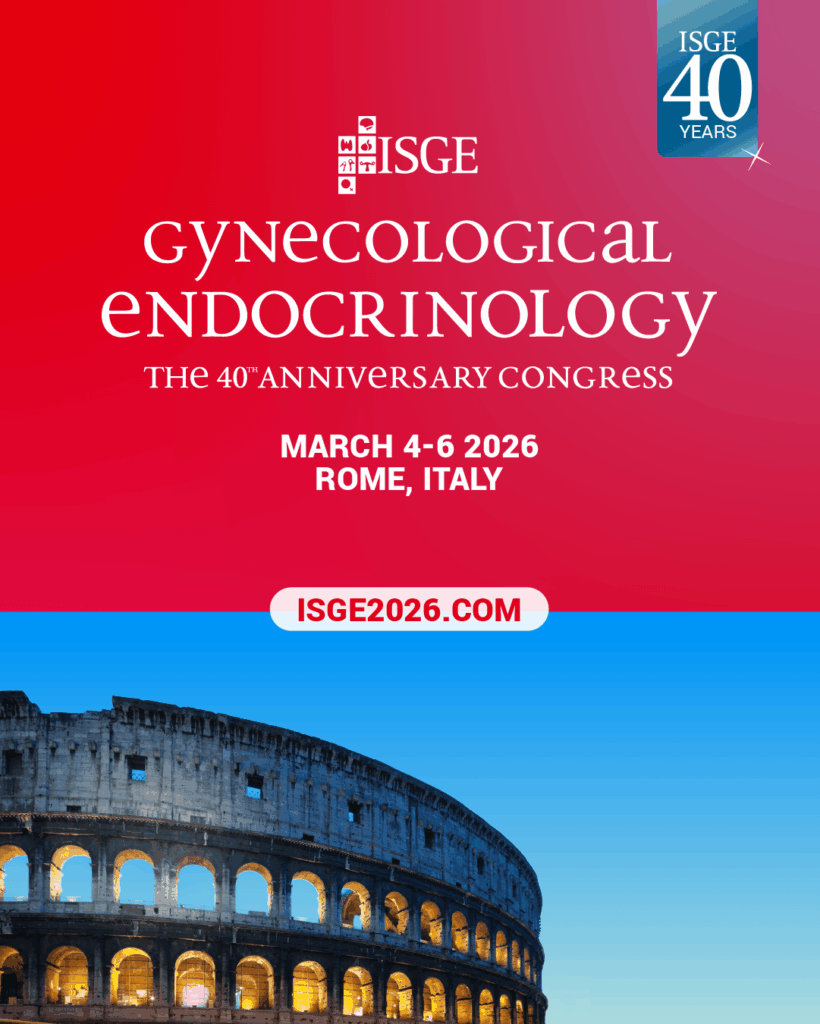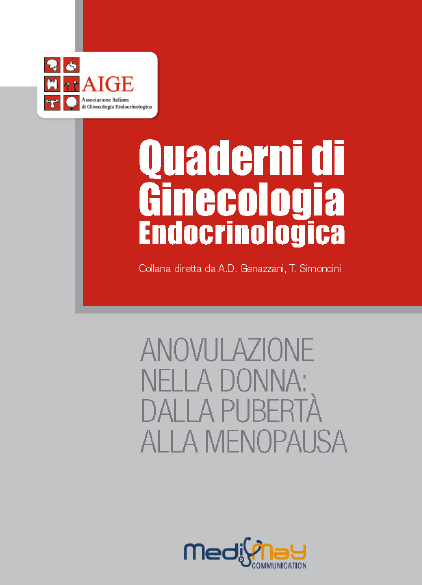-
ACOG
ACOG Committee Opinion No. 734: The Role of Transvaginal Ultrasonography in Evaluating the Endometrium of Women With Postmenopausal Bleeding
Obstetrics and Gynecology: May 2018 – Volume 131 – Issue 5 – p e124–e129
Download
Abstract
Cancer of the endometrium is the most common type of gynecologic cancer in the United States. Vaginal bleeding is the presenting sign in more than 90% of postmenopausal women with endometrial carcinoma. Clinical risk factors for endometrial cancer, including but not limited to age, obesity, use of unopposed estrogen, specific medical comorbidities (eg, polycystic ovary syndrome, type 2 diabetes mellitus, atypical glandular cells on screening cervical cytology), and family history of gynecologic malignancy also should be considered when evaluating postmenopausal bleeding. The clinical approach to postmenopausal bleeding requires prompt and efficient evaluation to exclude or diagnose endometrial carcinoma and endometrial intraepithelial neoplasia. Transvaginal ultrasonography usually is sufficient for an initial evaluation of postmenopausal bleeding if the ultrasound images reveal a thin endometrial echo (less than or equal to 4 mm), given that an endometrial thickness of 4 mm or less has a greater than 99% negative predictive value for endometrial cancer. Transvaginal ultrasonography is a reasonable alternative to endometrial sampling as a first approach in evaluating a postmenopausal woman with an initial episode of bleeding. If blind sampling does not reveal endometrial hyperplasia or malignancy, further testing, such as hysteroscopy with dilation and curettage, is warranted in the evaluation of women with persistent or recurrent bleeding. An endometrial measurement greater than 4 mm that is incidentally discovered in a postmenopausal patient without bleeding need not routinely trigger evaluation, although an individualized assessment based on patient characteristics and risk factors is appropriate. Transvaginal ultrasonography is not an appropriate screening tool for endometrial cancer in postmenopausal women without bleeding.
-
Chlebowski, Rowan T., Mortimer, Joanne E. Crandall, Carolyn J., Pan, Kathy, Manson, JoAnn E., Nelson, Rebecca, Johnson, Karen C., Vitolin, Mara Z., Lane, Dorothy, Wactawski-Wende, Jean, Kwan, Karen, Stefanick, Marcia L.
Persistent vasomotor symptoms and breast cancer in the Women’s Health Initiative
Menopause: December 28, 2018 – Volume Publish Ahead of Print – Issue – p doi: 10.1097/GME.0000000000001283
Abstract
Objective: Vasomotor symptoms (VMS) including hot flashes and night sweats are common during the menopausal transition and may persist. Although VMS pathophysiology is complex, estrogen’s efficiency as VMS therapy suggests hormonal environment change may influence this process. As studies of VMS and breast cancerare inconsistent, we examined associations between persistent VMS and breast cancer incidence and mortality.
Methods: The analytic sample included 25,499 postmenopausal women aged 50 to 79 in the Women’s Health Initiative (WHI) without current/former menopausal hormone therapy use with information on VMS status (never vs persistent). Breast cancers were verified by medical record review. Cause of death attribution was enhanced by serial National Death Index queries. Associations between VMS status and breast cancer incidence and mortality was determined using time dependent Cox regression analyses adjusted for breast cancer risk factors.
Results: Through 17.9 years (median) follow-up, 1,399 incident breast cancers were seen. Women with persistent VMS (VMS median duration 10+ years) (n = 9,715), compared to women with never VMS (n = 15,784), had a higher breast cancer incidence (hazard ratio [HR] 1.13 95% confidence interval [CI] 1.02-1.27). While breast cancer-specific mortality was higher in women with persistent VMS (HR 1.33 95% CI 0.88-2.02), the difference was not statistically significant. Persistent VMS status had no influence on breast cancer overall survival (HR 1.02 95% CI 0.81-1.29).
Conclusion: Women with persistent VMS are more likely to be diagnosed with breast cancer than women who never experienced VMS, but not more likely to die from breast cancer.
-
Kagan Risa, Constantine Ginger, Kaunitz Andrew M., Bernick Brian, Mirkin, Sebastian
Improvement in sleep outcomes with a 17β-estradiol–progesterone oral capsule (TX-001HR) for postmenopausal women
Menopause: December 21, 2018 – Volume Publish Ahead of Print – Issue – p doi: 10.1097/GME.0000000000001278
Objective: The aim of the study was to evaluate the effects of TX-001HR, a single-capsule 17β-estradiol–progesterone on sleep parameters in postmenopausal women with vasomotor symptoms (VMS) using the Medical Outcomes Study (MOS)-Sleep scale questionnaire in the REPLENISH trial.
Methods: In the REPLENISH trial (NCT01942668), women were randomized to one of four doses of TX-001HR or placebo, and the 12-item MOS-Sleep questionnaire (secondary endpoint) was self-administered at baseline, week 12, and months 6 and 12. Changes from baseline in the MOS-Sleep total score and 7 subscale scores were analyzed for treatment groups versus placebo at all time points. Somnolence was also collected as an adverse event.
Results: Women (mean age 55 y) were randomized to TX-001HR (estradiol/ progesterone [E2/P4] [mg/mg]) doses: 1/100 (n = 415), 0.5/100 (n = 424), 0.5/50 (n = 421), 0.25/50 (n = 424), or placebo (n = 151). TX-001HR significantly improved MOS-Sleep total score, Sleep Problems Index II subscale, and sleep disturbance subscale versus placebo at all time points, except with 0.25 mg E2/50 mg P4 at week 12. Differences in LS mean changes between TX-001HR and placebo for MOS-Sleep total scores ranged from −6.5 to −7.6 at 12 months (all; P ≤ 0.001). All doses of TX-001HR significantly improved the Sleep Problems Index I subscale at all time points. The sleep somnolence subscale significantly improved from baseline with 0.5 mg E2/100 mg P4 and 0.5 mg E2/50 mg P4 at month 12. The incidence of somnolence as a treatment-emergent adverse event ranged from 0.2% to 1.2% versus 0% with placebo.
Conclusion: TX-001HR significantly improved MOS-Sleep parameters from baseline to week 12, which was sustained for up to 12 months, and was associated with a very low incidence of somnolence.
-
Jae Hyun Jung; Cho Hee Bang; Gwan Gyu Song; Cholhee Kim; Jae-Hoon Kim; Sung Jae Choi
Knee osteoarthritis and menopausal hormone therapy in postmenopausal women: a nationwide cross-sectional study
Publish Ahead of Print():, DEC 2018 DOI: 10.1097/GME.0000000000001280
Objective: The incidence of osteoarthritis (OA) increases after menopause, and may be related to hormonal changes in women. Estrogen deficiency is known to affect the development of OA, and menopausal hormone therapy (MHT) is suggested to be related to the development of OA. However, the relationship between knee OA and MHT remains controversial. The association between knee OA prevalence and MHT was investigated using large-scale national data.
Methods: Data were collected from 4,766 postmenopausal women from the Korea National Health and Nutrition Examination Survey (2009-2012). MHT was defined as regular hormone medication for ≥1 year, and demographic and lifestyle variables were compared between the MHT and non-MHT groups. Knee OA was defined according to symptoms and radiographic findings.
Results: In the multiple logistic regression models, the OA odds ratio was 0.70 for the MHT group (95% confidence interval 0.50-0.99), compared with the non-MHT group.
Conclusions: The prevalence of knee OA was lower in participants with MHT than in those without MHT.
-
Xing Yan Liu, Yun Jie Yang, Chuan Ling Tang, Kai Wang, Jun-Jiang Chen, Xiao Ming Teng, Ye Chun Ruan, Jian Zhi Yang
Elevation of antimullerian hormone in women with polycystic ovary syndrome undergoing assisted reproduction: effect of insulin
Fertil Steril 2019;111:157–67
Download
Objective: To measure blood and follicular antimullerian hormone (AMH) levels in women with polycystic ovary syndrome (PCOS) € undergoing assisted reproductive technologies (ART) and to examine the direct action of insulin on AMH expression in human granulosa cells.
Design: Prospective clinical and experimental study. Setting: University Hospital-based laboratory. Patient(s): Women with (n ¼ 86) and without (n ¼ 172) PCOS in ART.
Intervention(s): Blood, follicular fluid, and luteinized granulosa cells were collected from PCOS and non-PCOS women in ART.
Main Outcome Measure(s): Hormone levels in blood and fluid, and gene expression in granulosa cells.
Result(s): Serum levels of AMH were elevated and inversely correlated with embryo cleavage rate in PCOS women in ART. Significant higher levels of AMH were also found in small and large follicles collected from PCOS women compared with non-PCOS women. Luteinized granulosa cells from PCOS women showed higher expression of AMH and its receptor AMHR2. Direct effect of insulin in increasing the expression of AMH in the isolated luteinized granulosa cells was observed, with the PCOS granulosa cells responding to a high dose of insulin. Cotreatment with AMH attenuated insulin-induced aromatase expression in the luteinized granulosa cells.
Conclusion(s): These results suggest that insulin may contribute to AMH elevation in PCOS and that AMH counteracts insulinpromoted aromatase expression in granulosa cells.
-
Shiqin Zhu, Bingqian Zhang, Xiao Jiang, Zeyan Li, Shigang Zhao, Linlin Cui, Zi-Jiang Chen
Metabolic disturbances in non-obese women with polycystic ovary syndrome: a systematic review and meta-analysis
Fertil Steril 2019;111:168–77
Download
Objective: To explore metabolic disturbances in nonobese women with polycystic ovary syndrome (PCOS) compared with nonobese healthy controls.
Design: Systematic review and meta-analysis. Setting: Not applicable. Patient(s): Nonobese women with PCOS and nonobese healthy controls.
Intervention(s): None.
Main Outcome Measure(s): Prevalence of metabolic disturbances including hyperinsulinemia, insulin resistance (IR), impaired fasting glucose (IFG), impaired glucose intolerance (IGT), prediabetes, dyslipidemia, hypercholesterolemia, hypertriglyceridemia, and low high-density lipoprotein (low-HDL), as well as other metabolic outcomes such as type 2 diabetes mellitus (T2DM), hypertension, metabolic syndrome (Mets), myocardial infarction, stroke, cerebrovascular accident, arterial occlusive disease, and coronary heart disease.
Result(s): Compared to nonobese controls, nonobese women with PCOS showed a higher prevalence of hyperinsulinemia (odds ratio [OR], 36.27; 95% confidence interval [CI] 1.76–747.12), IR (OR, 5.70; 95% CI 1.46–22.32), IGT (OR, 3.42; 95% CI 1.56–7.52), T2DM (OR, 1.47; 95% CI 1.11–1.93), hypertriglyceridemia (OR, 10.46; 95% CI 1.39–78.56), low-HDL (OR, 4.03; 95% CI 1.26–12.95), and Mets (OR, 2.57; 95% CI 1.30–5.07). No significant difference was observed for IFG, pre-DM, dyslipidemia, hypercholesterolemia, and hypertension. In subgroup analysis, Whites exhibited increased risks of IR, IGT, IFG, T2DM, hypertension, and Mets, whereas no significant metabolic change was found in Asians. No study reported specifically an incidence of myocardial infarction, stroke, cerebrovascular accident, arterial occlusive disease, and coronary heart disease in nonobese women with PCOS.
Conclusion(s): Nonobese women with PCOS also suffer from metabolic disturbances and the risk of long-term metabolic complications. Further efforts should be made to elucidate underlying mechanisms and possible interventions in the early phase.
-
Neeti Chhabra, Sonia Malik
Effect of insulin sensitizers on raised serum anti-mullerian hormone levels in infertile women with polycystic ovarian syndrome
J Hum Reprod Sci 2018 ;11:348-52
Download
Context: Increased circulating insulin levels contribute to hyperandrogenism in polycystic ovarian syndrome (PCOS) which causes a derangement in folliculogenesis, thus contributing to polycystic morphogenesis of the ovaries and a higher than normal anti-Mullerian hormone (AMH). A high AMH is an indicator of either stubborn anovulation or a predictor of ovarian hyperstimulation syndrome. Hence, it is postulated that the use of insulin sensitizers will reduce insulin resistance, hyperandrogenism, and subsequently serum AMH levels and will convert anovulatory cycles to ovulatory.
Aim: To study the effect of insulin sensitizers on raised serum AMH levels in infertile women with PCOS.
Settings and Design: This was a prospective interventional randomized single tertiary center study.
Methodology: The study was conducted from August 2015 to April 2016. Infertile patients with PCOS as defined by the Rotterdam criteria with raised AMH (>5 ng/ml) levels were enrolled in the study under strict inclusion and exclusion criteria. The sample size was 105 patients. Cycle regularity, day 2–antral follicle count (AFC), luteinizing hormone, AMH levels, modified Ferriman–Gallwey score (mFGS), and acne score were recorded before starting the intervention. Patients were randomized into three equal groups of 35 each. Group A received metformin alone, Group B metformin plus myoinositol, and Group C only myoinositol. After completion of 3 months of pretreatment, the same parameters were rechecked.
Statistical Analysis Used: Univariate analysis and Chi-square test were used for statistical analysis.
Results: Of 105 patients, 95 completed treatment and the rest 10 dropped out. There was a reduction in AMH in all groups of insulin sensitizers with significant fall in the metformin only group. Cycle regularity, reduction in AFC, mFGS, and grade of acne were also obtained.
Conclusions: Therapy with insulin sensitizers in PCOS women with raised AMH reduces the AMH levels, converts irregular menstrual cycles to regular, and reduces clinical hyperandrogenism.






